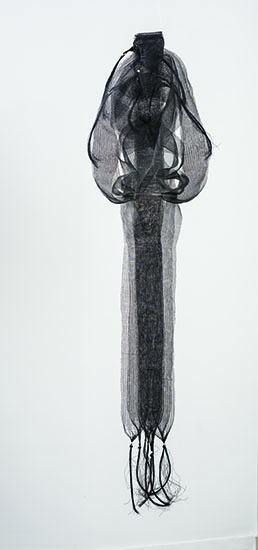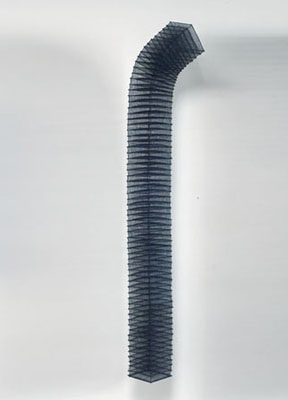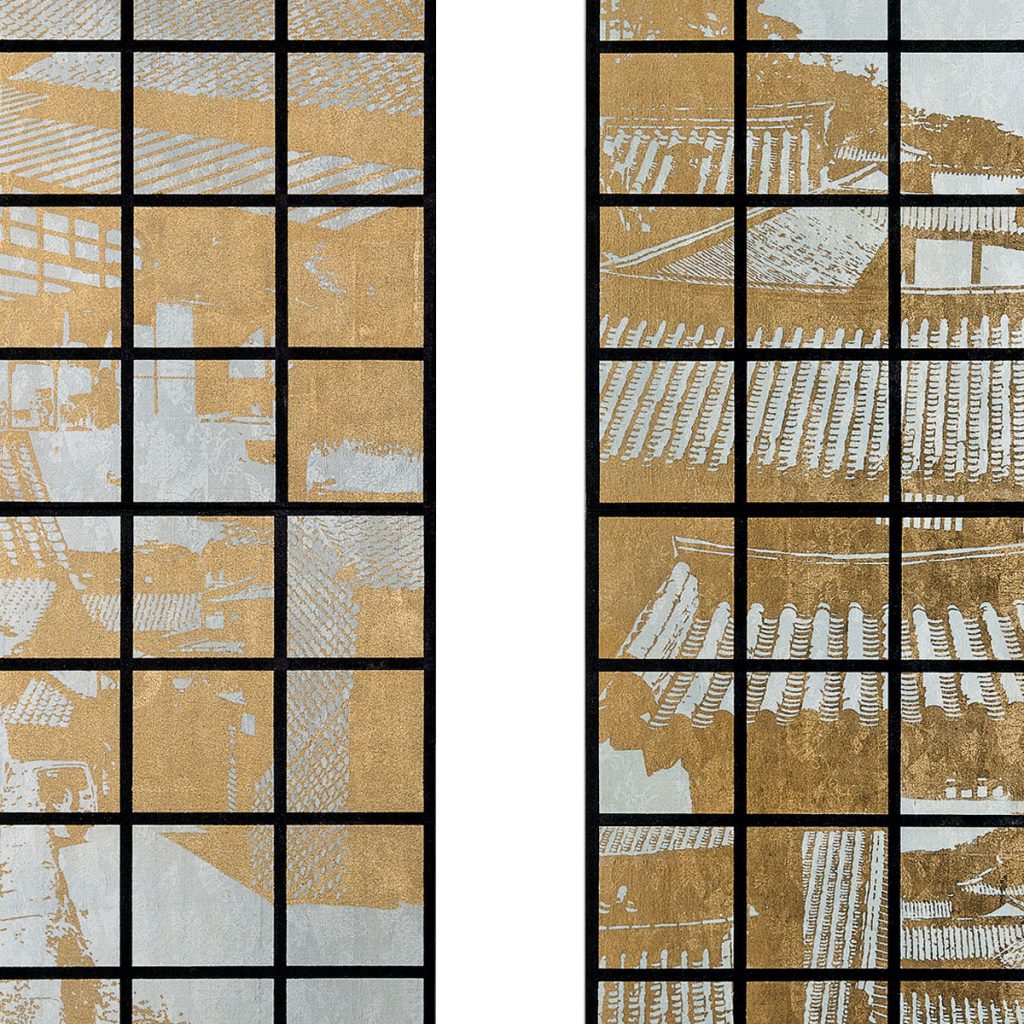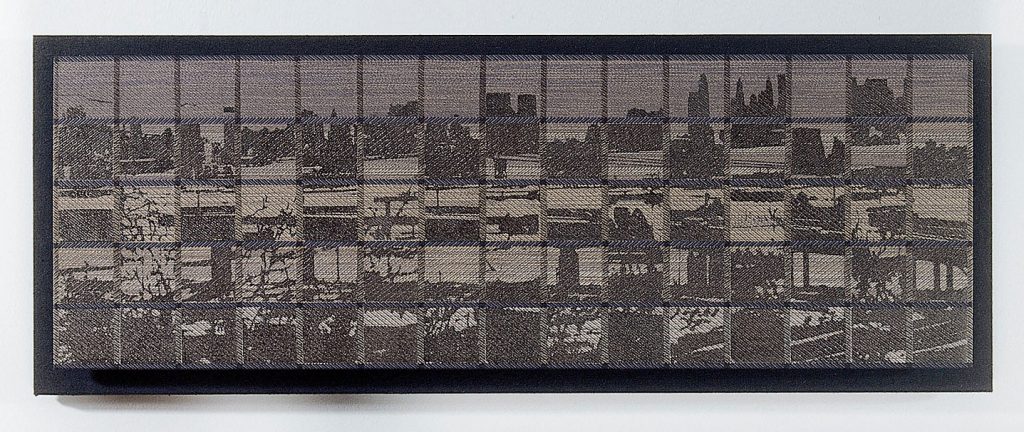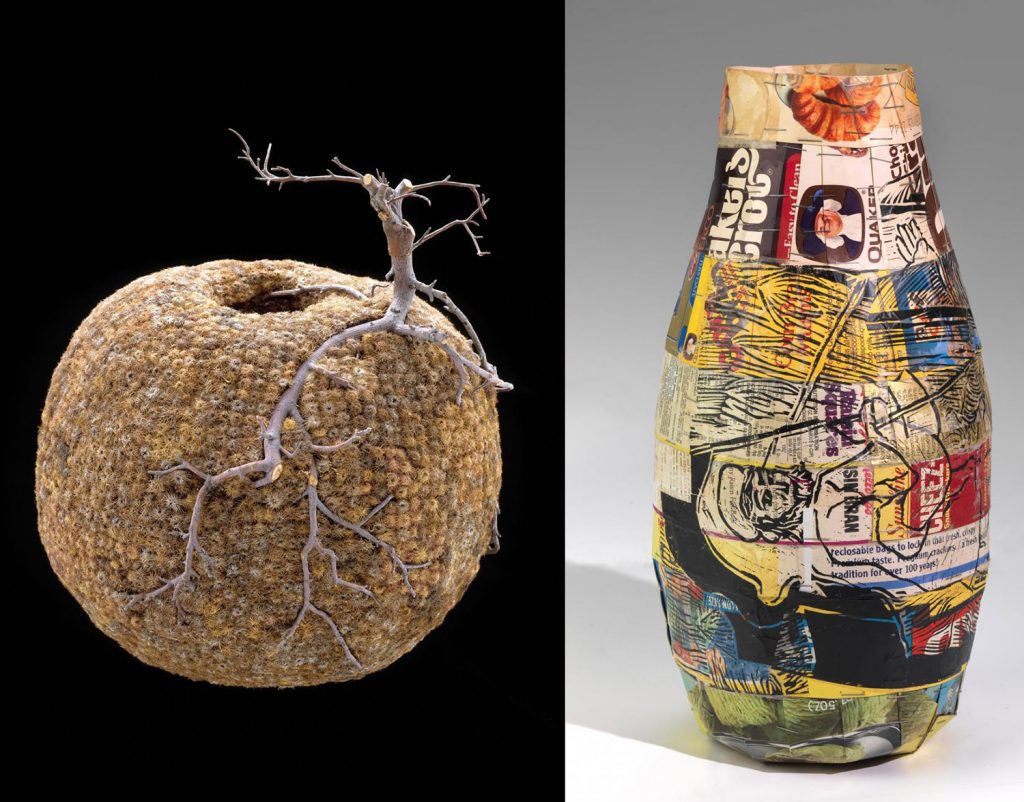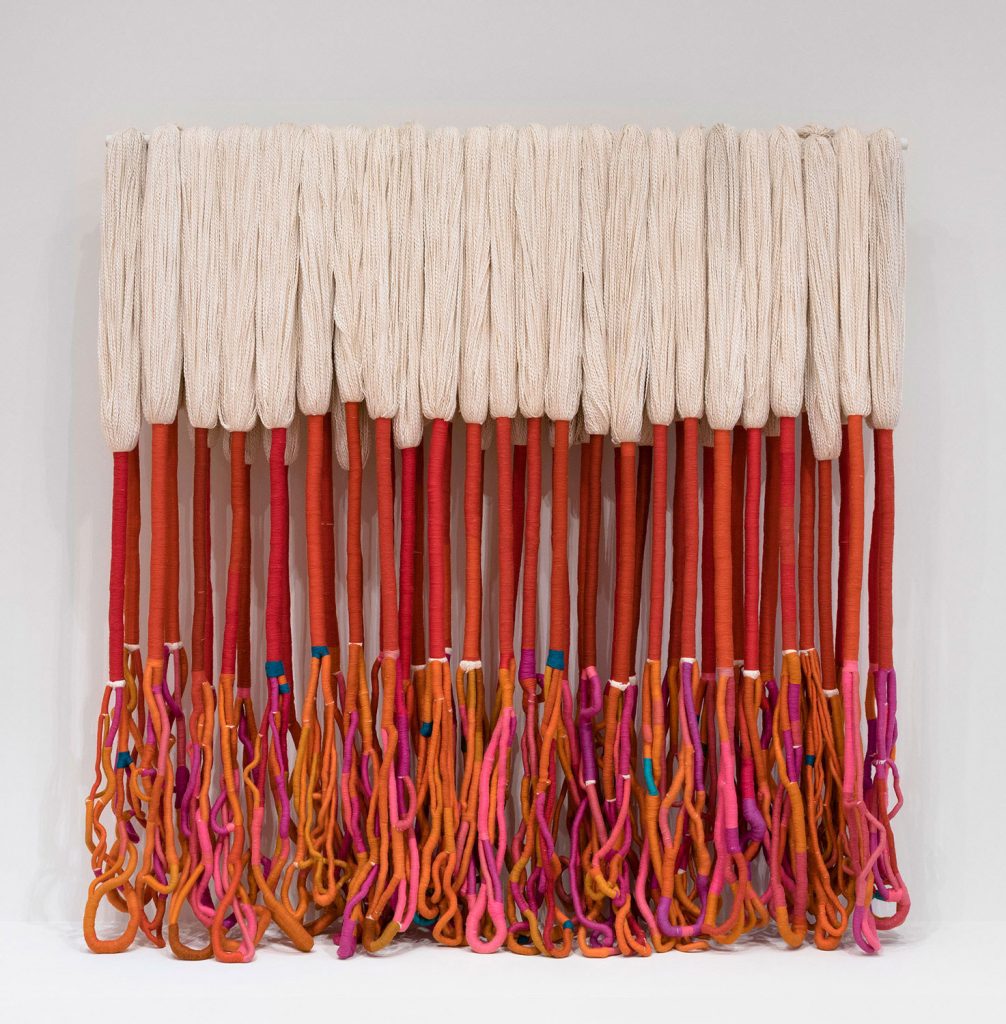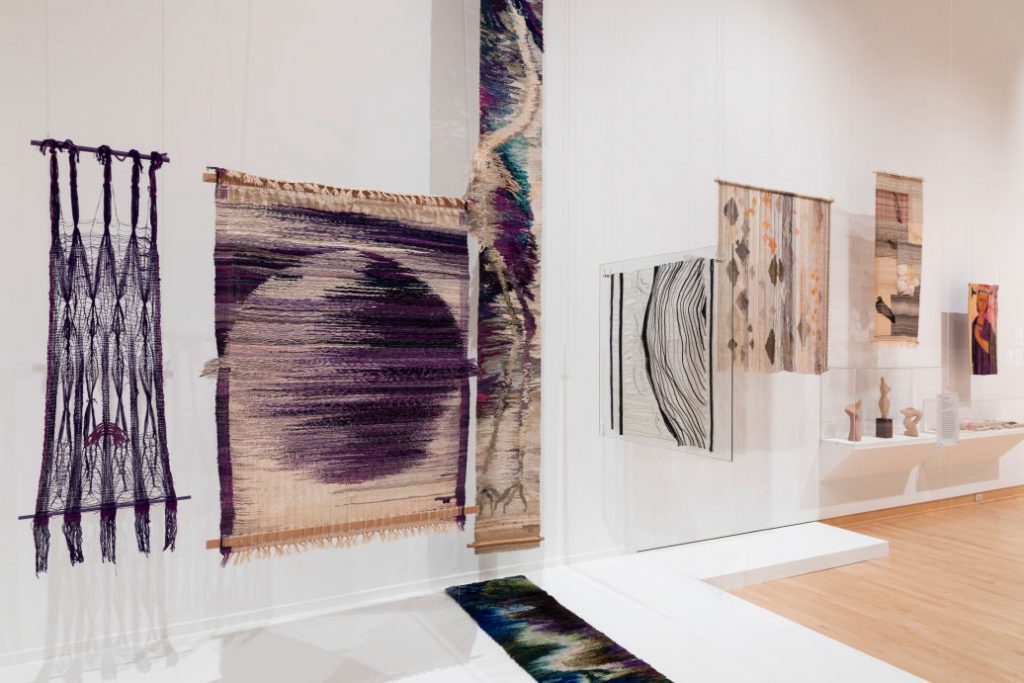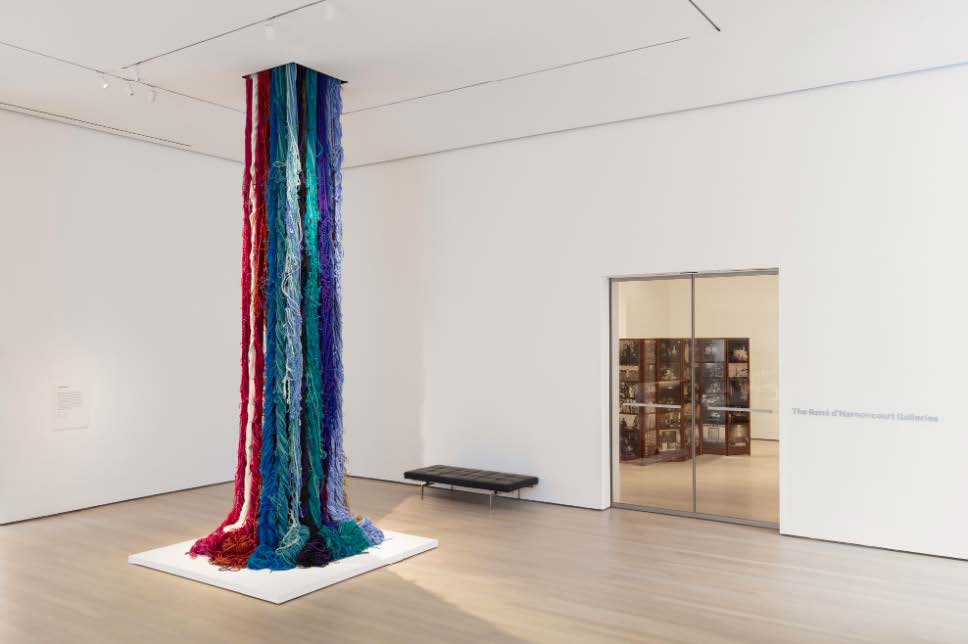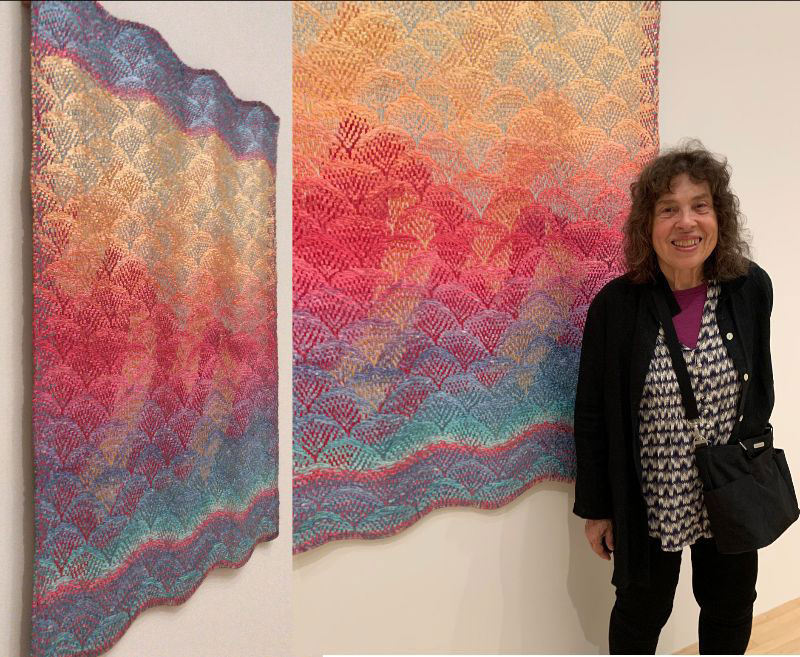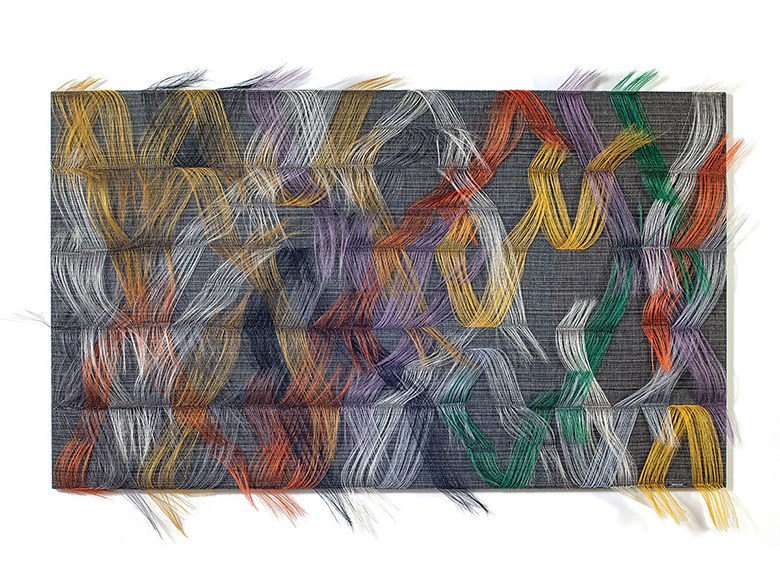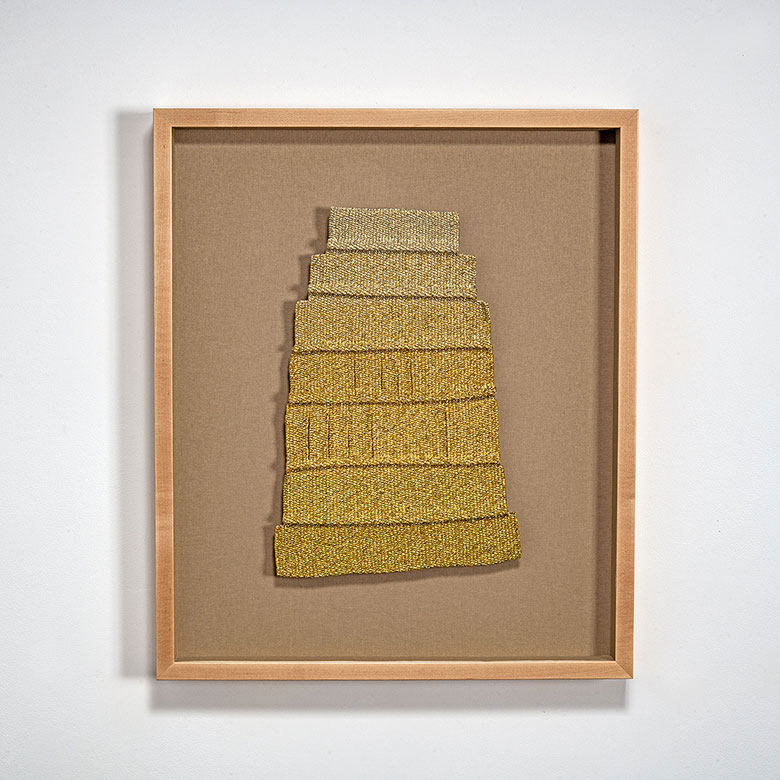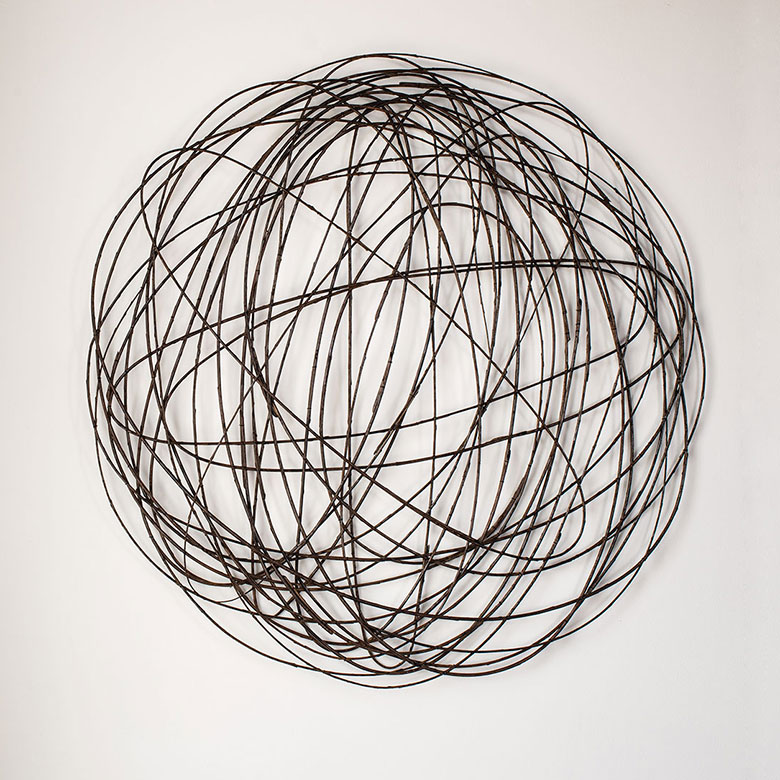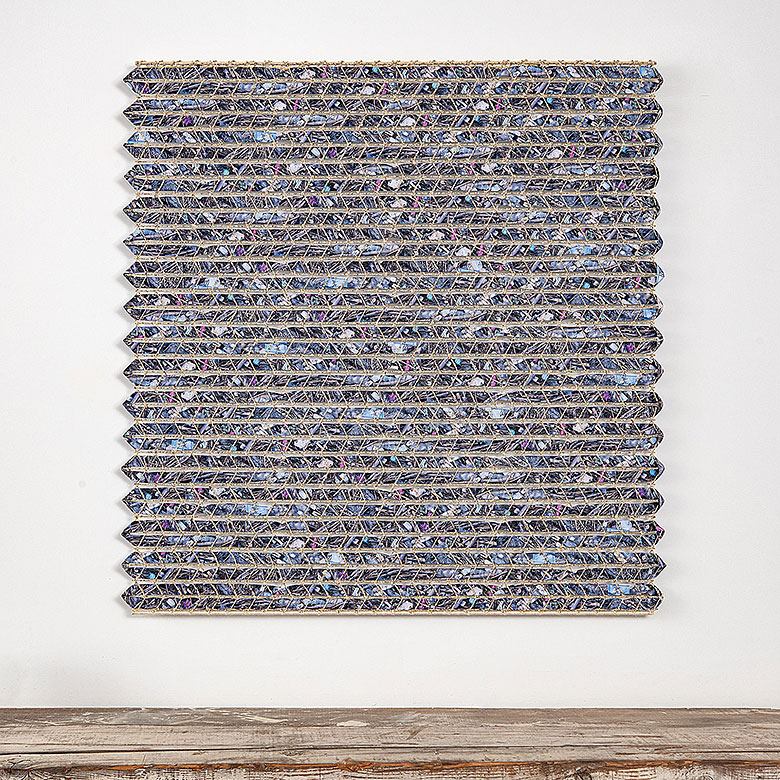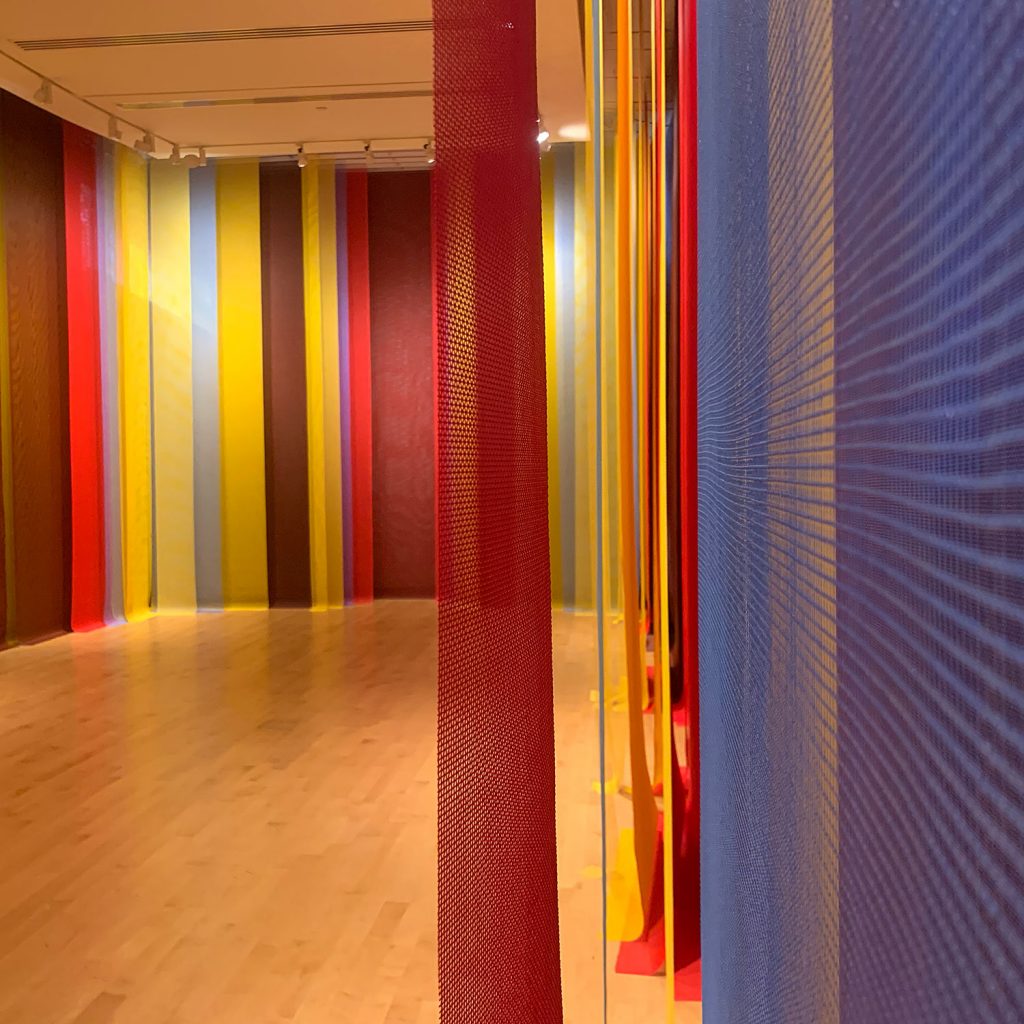
What’s with Mesh? It’s been popular with our artists for sometime. But now we are seeing it in other contexts, too. At the Aldrich Museum of Art in Ridgefield, Connecticut, Eva LeWitt introduced a new material for her exhibition — coated mesh, most commonly used for filters, window screens, and even protective clothing, LeWitt investigates its lightweight and light responsive crosshatched woven surface (through April 5th). Spanning three of the four walls, LeWitt has suspended from the ceiling nine cumulative layers, color fields of tensile mesh, forming interlacing moiré effects that swell and pulsate.
LeWitt favors materials that she can handle and maneuver alone in the studio: plastics, latex, fabrics, and vinyl—substances offered in an array of readymade colors and a variability of light absorbencies– to generate sculptures and installations that harmonize color, matter, and space, Employing strategies of accretion and repetition, she customizes her work to comply and adjust to the surroundings of a particular setting.
Then there is Katsuhiro Yamaguchi, in the collection at Tate modern, who work in a variety of materials. https://www.tate.org.uk/art/artworks/yamaguchi-mesh-sculpture-t14164 In the 1960s Yamaguchi, incorporated various materials such as acrylic resin, light, wire-mesh, upholstery and wax, expanding his means of expression to include the environment of the ceiling and the walls.
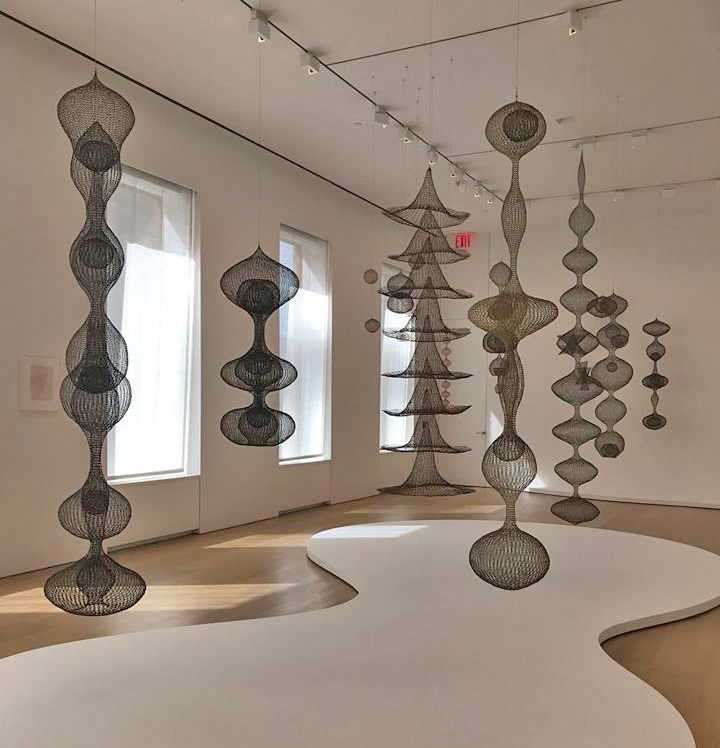
Ruth Asawa’s work in mesh is the subject of new-found appreciation https://www.latimes.com/home/la-lh-los-angeles-modern-auctions-realizes-record-auction-20140225-story.html. “Asawa began to crochet wire-mesh structures in 1948. The symmetrical structures themselves were intellectually rigorous, requiring discipline and technical precision. The resulting constructs were ethereal, fanciful, and vital.” The essence of Asawa’s art in wire has to do with transparency and interpenetration, with overlapping, shadow, and darkening” something looping wire mesh can evidence effectively.
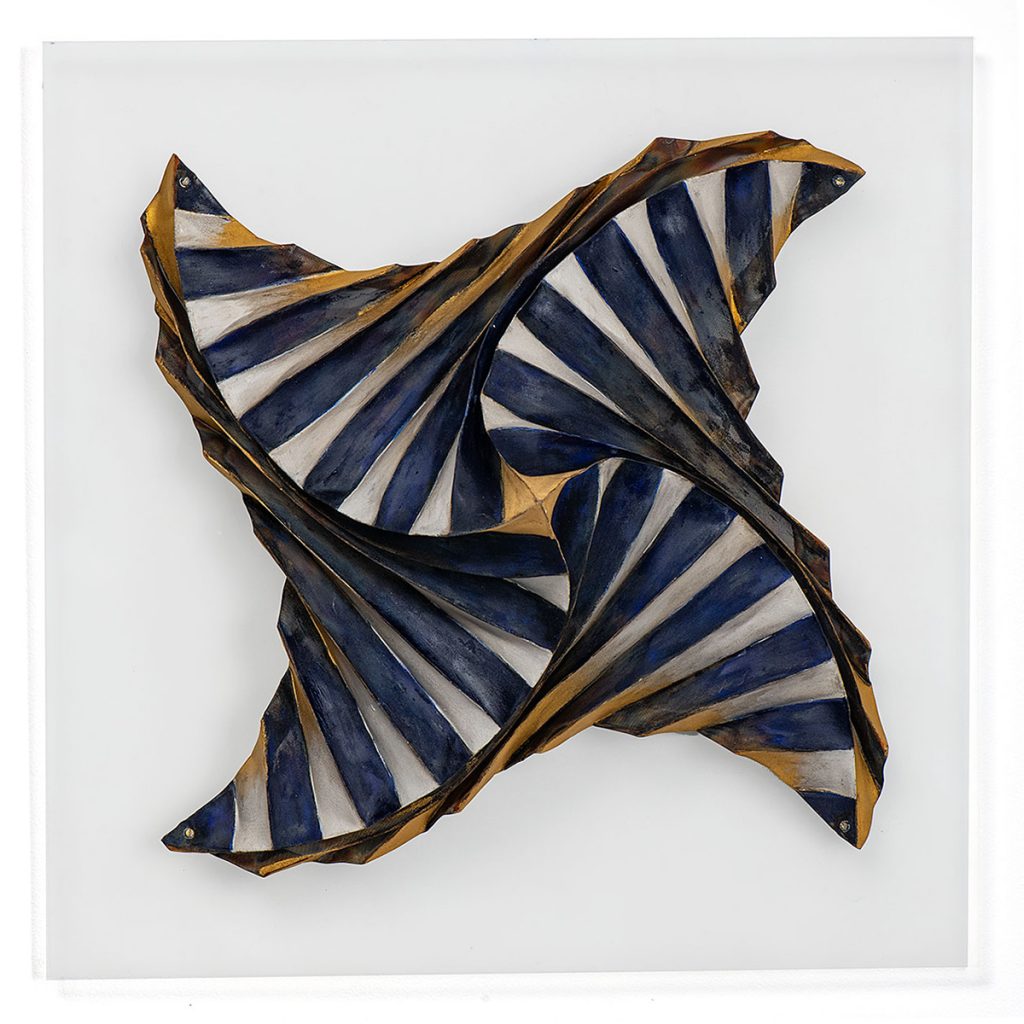
steel mesh, folded, burnt and painted with gold, silver and acrylic
15.75″ x 15.75″ x 5.5″, 2018
Among our artists for Jin-Sook So, mesh is a like a zelig — an ordinary person who can change themselves to imitate anyone they are near. It can replicate the look of silk organza but when painted it looks like canvas. When electroplated and sculpted into forms it emits a burnished glow.
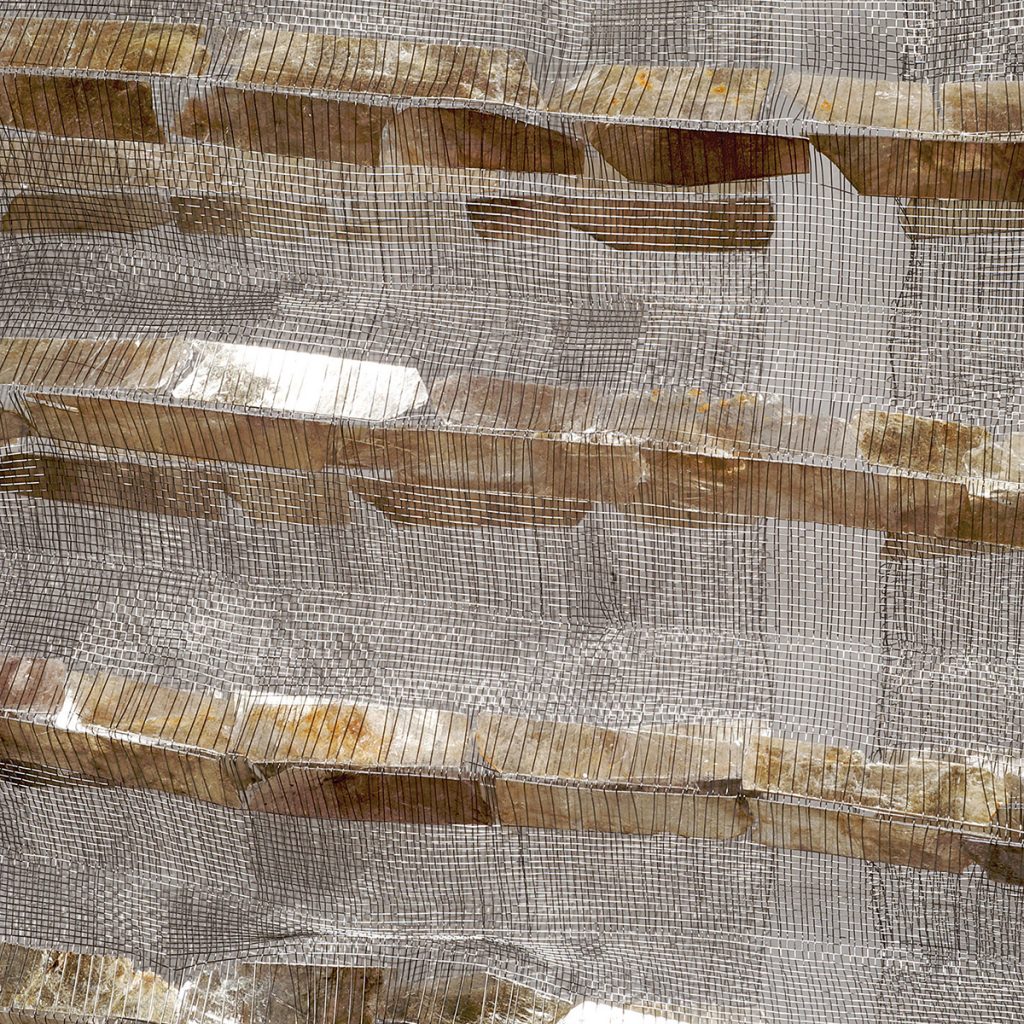
Agneta Hobin is best known forr impressive works in which yellow mica has been woven into metal warp; the technique and materials are the artist’s unique choises which she has been developing for over ten years.
In the 70s, Kay Sekimachi used a 21-harness loom, to create sheets of mesh-like nylon monofilament. She combined these to create ethereal, hanging quadruple tubular woven forms that explore ideas of space, transparency, and movement. Only 22 of these remarkable sculptures were made.
Chang Yeonsoon uses polyester mesh as a “frame” for layers of natural abaca fiber with striking results.. Yeon soon who is a leading contemporary textile artist in Korea was selected as finalists of the LOEWE Craft Prize 2018.
And, on a large scale, check out this building of mesh filled with cork https://www.dezeen.com/2020/
01/10/gharfa-pavilion-edoardo-tresoldi-studio-studio-studio-saudi-arabia/. It’s the product of Edoardo Tresoldi who has combined sound, projections, landscaping and fabric with his signature wire-mesh sculptures for Gharfa, a large site-specific pavilion in Riyadh.
Embrace the mesh!

